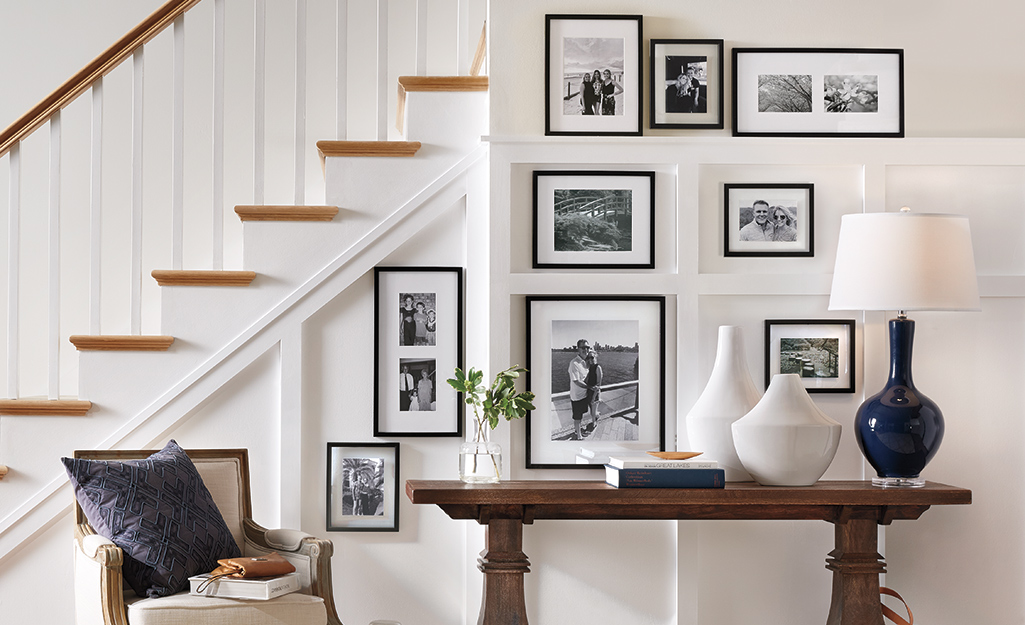Creative Designs for Interactive Photo Walls: Engage Audiences
In the realm of photography, creating compelling and engaging visual experiences goes beyond capturing stunning images. It's about how these images are displayed, interacted with, and perceived by the audience. Creative designs for interactive photo walls have emerged as a powerful way to engage audiences, offering an innovative approach to showcasing photographic work. Professional photographers, in particular, are finding this medium both challenging and rewarding, as it allows them to connect with viewers on a deeper level.
The concept of interactive photo walls not only transforms the way images are exhibited but also enhances the viewer's experience by inviting them to engage actively with the display. By incorporating various elements such as touch, movement, and sound, photographers can create a dynamic and immersive environment that captivates the audience's attention. This approach not only adds value to the visual presentation but also enriches the narrative behind each photograph.

Understanding the Appeal of Interactive Photo Walls
Interactive photo walls are not just about aesthetics; they are about creating a memorable experience. The appeal lies in their ability to surprise and delight the audience, making them an ideal choice for galleries, events, and exhibitions. By blending technology with creativity, photographers can transform a static display into a lively and engaging narrative.
For instance, consider a photo wall that reacts to the viewer's presence. As someone approaches, the images could change, rotate, or even emit sounds that correspond to the theme of the photographs. This type of interaction invites the audience to become a part of the art, creating a personal connection with the display.
Utilizing Technology to Enhance Interaction
The incorporation of technology is a key element in designing interactive photo walls. From motion sensors to touchscreens, the possibilities are vast. Photographers can use projection mapping to overlay images onto various surfaces, creating a moving tableau that changes as the viewer moves around the room. This not only captivates attention but also encourages viewers to explore the display from different angles.
Furthermore, integrating augmented reality (AR) can elevate the interactive experience. By using an AR app, viewers can point their smartphones at a photograph to reveal hidden elements, such as videos, animations, or additional images. This layering of content allows photographers to tell a more comprehensive story and engage the audience in a multifaceted way.
Designing the Perfect Interactive Photo Wall
Designing an interactive photo wall requires a thoughtful approach, balancing creativity with practicality. Photographers must consider the space, the audience, and the narrative they wish to convey. The arrangement of images, the choice of technology, and the overall theme should align to create a cohesive and engaging display.
One effective strategy is to curate a theme that resonates with the audience. For example, a nature-themed photo wall could incorporate elements like sounds of the forest or the movement of trees. By doing so, photographers can create an immersive environment that transports viewers into the world depicted in the photographs. For inspiration, check out these nature-inspired ideas.
Choosing the Right Space and Layout
The space where the photo wall is displayed plays a crucial role in its design. Factors such as lighting, wall texture, and viewer flow must be considered to optimize the interactive experience. Using natural light can enhance the visual impact of the images, as discussed in this article on natural light in displays.
Additionally, the layout of the images should guide the viewer through the story. A well-thought-out sequence can lead the audience on a visual journey, with each image building upon the last. This can be achieved by arranging the photographs in a way that complements the narrative flow.
Incorporating Audience Interaction
To truly engage the audience, photographers must consider how viewers will interact with the photo wall. Incorporating elements that invite participation, such as touch-sensitive panels or motion-triggered animations, can transform a passive viewing experience into an active exploration.
For example, a photo wall that allows viewers to rearrange images or change the display through touch creates a sense of ownership and involvement. This interactive element can be particularly effective in exhibitions where audience participation enhances the overall experience.
Moreover, integrating sound into the display can add another layer of interaction. Sounds that complement the photographs' themes can evoke emotions and create a multisensory experience. Whether it's the sound of waves crashing for a beach-themed wall or city noises for an urban display, sound can deepen the viewer's engagement.
Engaging Storytelling through Interactive Walls
Storytelling is at the heart of photography, and interactive walls offer a unique platform to convey complex narratives. By using a combination of images, sound, and technology, photographers can create a rich tapestry that draws the viewer into the story. This approach not only captivates the audience but also leaves a lasting impression.
Incorporating diverse storytelling techniques, such as sequential imagery or thematic groupings, can enhance the narrative. Photographers can explore various styles, from documentary to abstract, to find the best way to communicate their vision. For tips on curating abstract themes, refer to this guide on curating abstract photo walls.
Conclusion: The Future of Interactive Photo Walls
As technology continues to evolve, the potential for creative designs for interactive photo walls is limitless. Professional photographers have the opportunity to push the boundaries of traditional displays, offering audiences a fresh and engaging way to experience art. By embracing innovation and creativity, photographers can create interactive photo walls that not only showcase their work but also inspire and captivate audiences.
For more inspiration, explore these art wall decor ideas that can elevate your next project.

FAQs
What are interactive photo walls?
Interactive photo walls are displays that incorporate technology and design elements to engage viewers actively. They often include touch, movement, and sound to create a dynamic experience.
How can photographers benefit from using interactive photo walls?
Photographers can enhance their exhibitions by using interactive photo walls to create memorable and engaging experiences for their audience, allowing for deeper connections with the art.
What technologies are commonly used in interactive photo walls?
Common technologies include motion sensors, touchscreens, projection mapping, and augmented reality. These tools help create an engaging and immersive environment for viewers.

